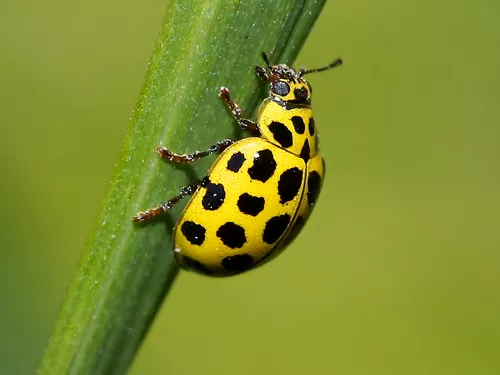
7-spot ladybird
The classic ladybird, found in parks and gardens across the UK. It’s a large ladybird, usually 5-8mm long. It has red wing cases, with three black spots on each side and a seventh spot in the middle, just behind the pronotum. Look for it on low-growing plants.












